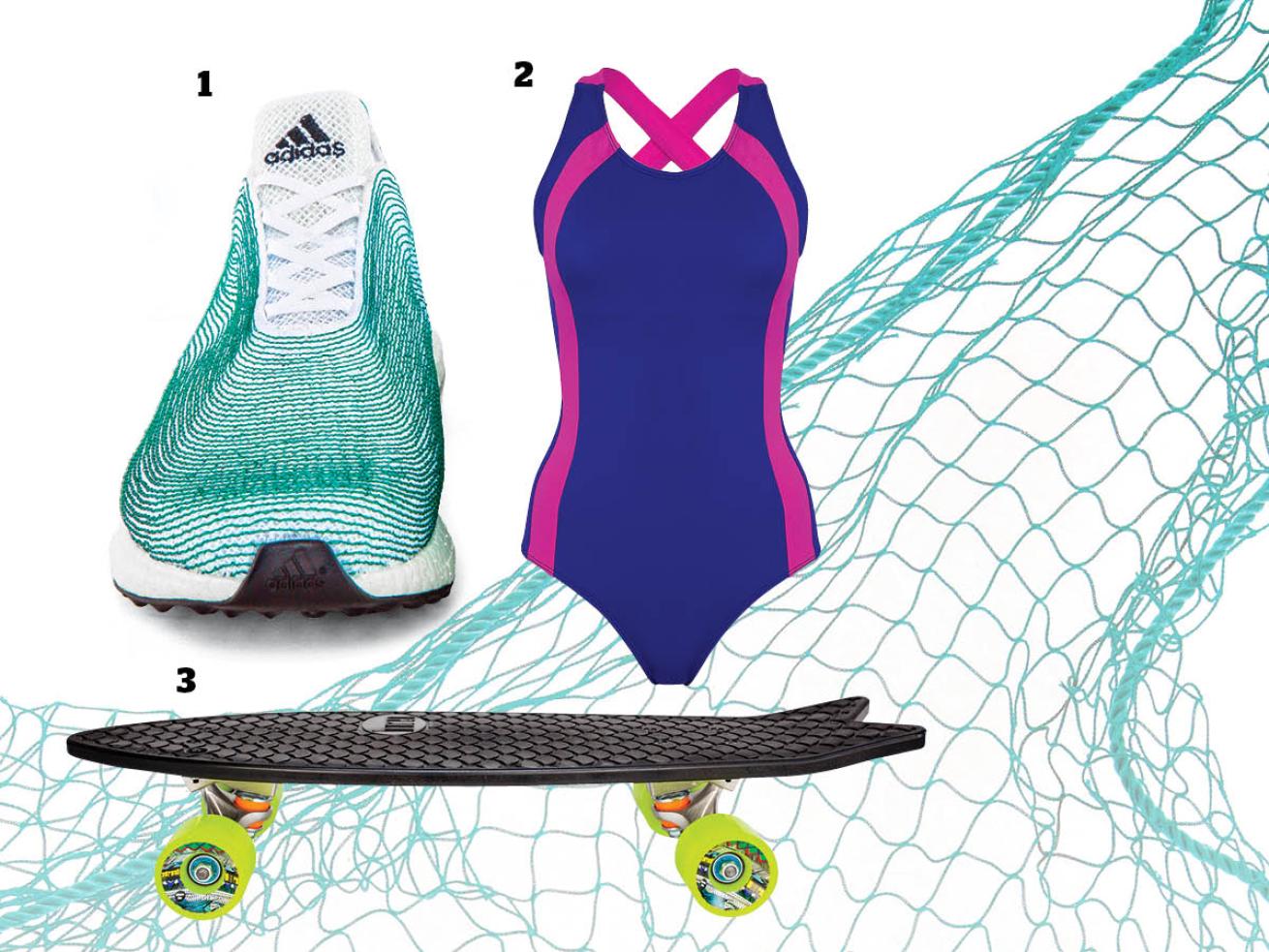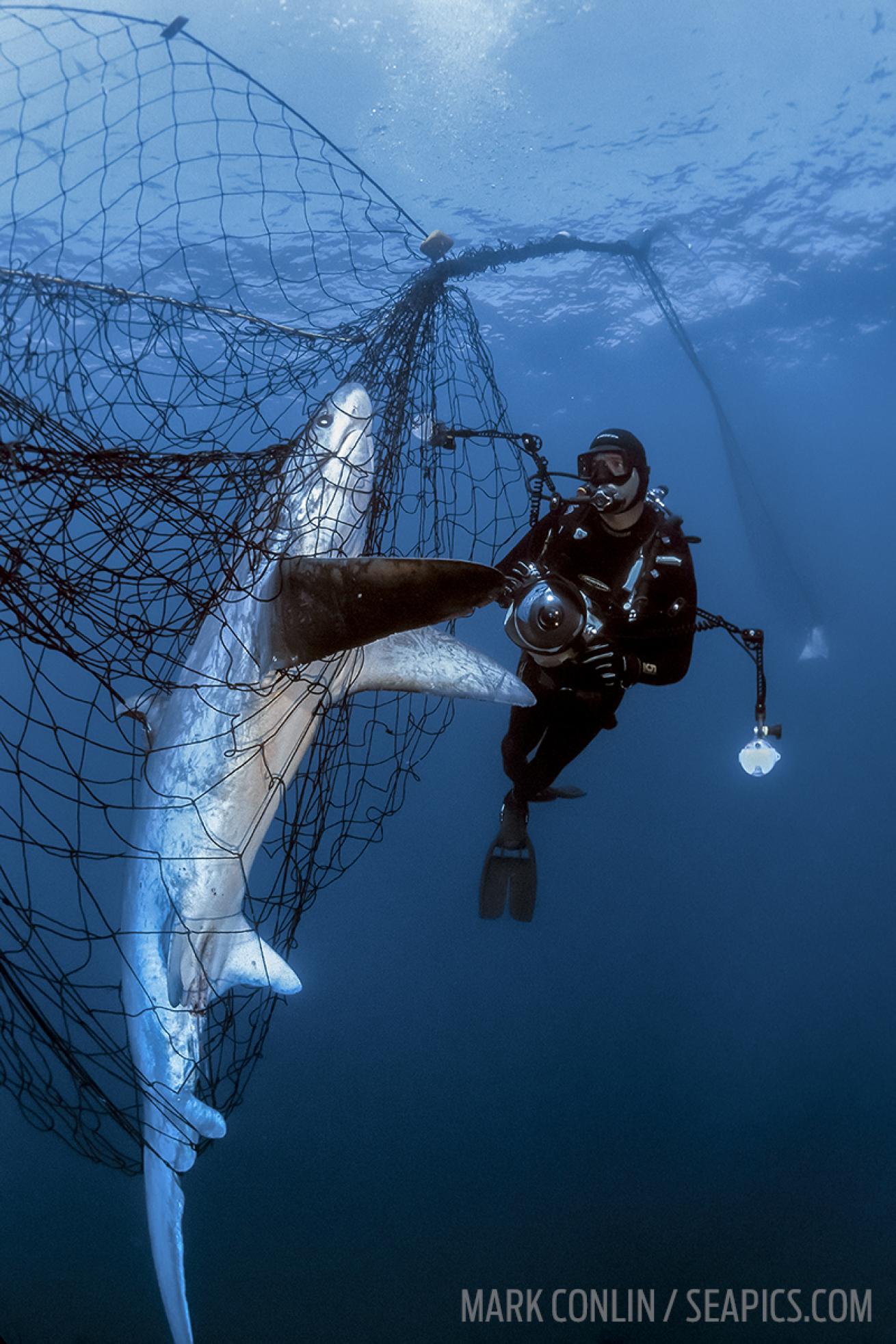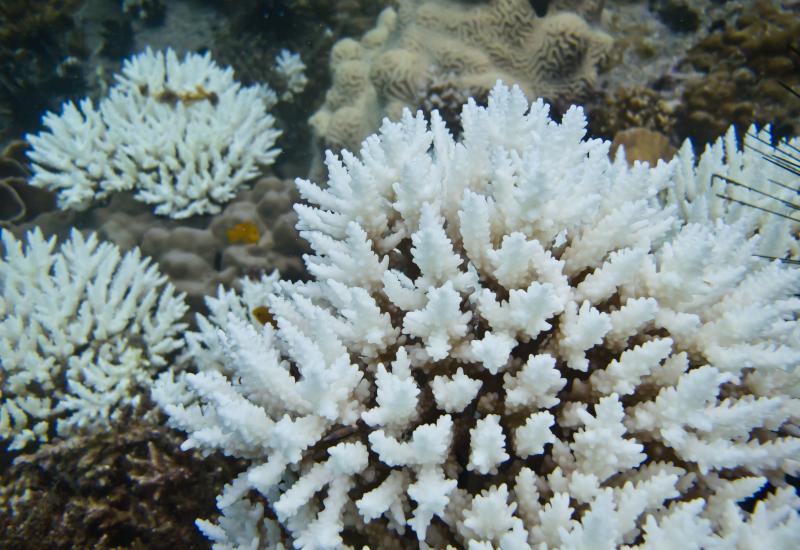Swimwear, Skateboards and Shoes Made From Recycled Fishing Line and Marine Debris

Monica Alberta
PRODUCTS MADE FROM RECYCLED GHOST NET
1 Adidas Ocean Plastic Shoe
Still in the prototype phase, this 3-D printed shoe was created to demonstrate how the clothing industry can rethink its designs to help put an end to marine debris. The midsole of the shoe is made from recycled polyester and gill nets, and the upper portion of the sneaker is made from plastic debris. adidas.com
2 Fourth Element Salina Swimsuit
Fourth Element calls its OceanPositive Line a grave-to-cradle project, reversing the traditional product-development model and protecting the oceans. The line of active swimwear is designed to fit under a wetsuit, and the durable yarn used to create the suits is spun from recycled ghost gear. oceanpositive.net
3 Bureo Minnow Skateboard
Bureo’s Net Positiva program combines fishnet collection and recycling to inspire future generations to take a stand for the ocean. The Minnow cruiser is the first skateboard that features a deck made of marine debris, and it exemplifies Bureo’s mission to create positive solutions to marine pollution. bureoskateboards.com
It’s called ghost gear. Like the apparitions it’s named for, this garbage at the bottom of the ocean is out of sight and out of mind for most people. However a number of innovative manufacturers are working to bring ghost gear out of hiding and into retail shops around the world. United Kingdom-based diving-gear manufacturer Fourth Element recently launched its OceanPositive line of swimwear that’s made from a revolutionary nylon yarn created from recycled ghost nets. Fourth Element also has plans to add a line of OceanPositive rash guards in the near future.
The materials for the yarn come from the Ghost Fishing organization, a nonprofit comprised of “fanatic wreck divers” who collect derelict fishing gear from international waters. This allowed Fourth Element’s OceanPositive line to start with a bang.
“We are at the very early stage of this project, and we’ve just scratched the surface in terms of meeting consumer demand,” says Fourth Element’s Jim Standing. “The Ghost Fishing project and other worldwide efforts brought up 110,000 tons of ghost gear in 2015 — about 15 percent of what was lost — so there is still a huge mission ahead, one which could be accelerated if awareness and demand increased, and other companies started using these recycled yarns.”

Mark Conlin/Seapics.comGhost Gear — fishing nets, lines and other garbage lost in the ocean — has detrimental effects on animals like this shark.
In Santiago, Chile, Bureo Skateboards is taking recycled fishing nets and transforming them into the decks for its Minnow Skateboards as well as its new line of sunglasses. To help keep used nets from ending up in the oceans, Bureo also co-founded the Net Positiva campaign, which has collected and recycled more than 22,000 pounds of fishing nets since it was established in 2013.
Ghost gear includes not only fishing nets, but also lobster traps, crab pots and other assorted equipment that is lost in the ocean through the course of commercial fishing operations. The name is frighteningly appropriate, not only because this discarded gear is rarely seen by the general public, but also because its stubborn refusal to die is having a horrific impact on the fragile ocean ecosystems it haunts.
Several diver-led organizations have taken on the daunting task of solving the problem by coordinating cleanup efforts around the globe and training divers on the often-precarious process of pulling ghost nets out of the oceans. These ocean activists are also shining a much-needed spotlight on the problem of ghost gear by showing divers that picking up small pieces of debris during their bottom times can make a big difference in the health of the oceans.
“The UN estimates that 600,000 tons of fishing gear is abandoned annually,” said Kurt Lieber, founder and executive director of Ocean Defenders Alliance, and Scuba Diving’s 2015 Sea Hero of the Year. “And it’s estimated that more than 360,000 turtles and marine mammals are killed every year in this abandoned gear. And that’s just the ones they keep track of.”
Ocean Defenders Alliance is working to solve the problem on a local level by training divers to bring up ghost nets along California’s coast and organizing dive trips for this purpose.
On a global scale, Parley for the Oceans is working to create lasting solutions to combat ghost gear, bringing together leaders from different industries to develop new business models and create alternative products that are more ecologically sensible. It’s a concept that companies around the world are already proving to be economically — and environmentally — effective.
A prime example of this environmentally friendly model can be seen in the company Adidas. Last year the shoe manufacturer announced plans to develop a line of footwear in partnership with Parley for the Oceans that will be made from reclaimed ghost nets and available to consumers sometime this year.
“The industry can’t afford to wait for directions any longer. Together with the network of Parley for the Oceans, we have started taking action and creating new sustainable materials and innovations for athletes,” says Eric Liedtke, Adidas Group executive board member responsible for global brands. “We want to bring everyone from the industry to the table to create sustainable solutions for big global problems.”
Which is exactly what it’s going to take for us to finally exorcise these ghosts from our oceans.
BECOME A GHOST BUSTER
Whether it’s in the name of fashion or passion for the oceans, you can become a part of the movement to eliminate ghost gear. Divers can pick up pieces of trash they see and report larger debris to organizations such as ODA; nondivers can volunteer at beach cleanups and donate to nonprofits like ODA and the Ghost Fishing project, and buy products made from reclaimed ghost gear.










